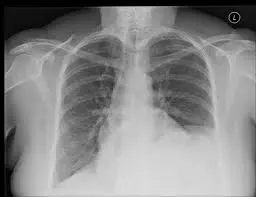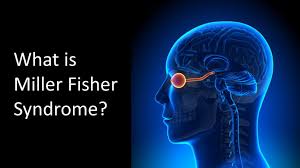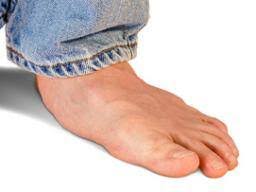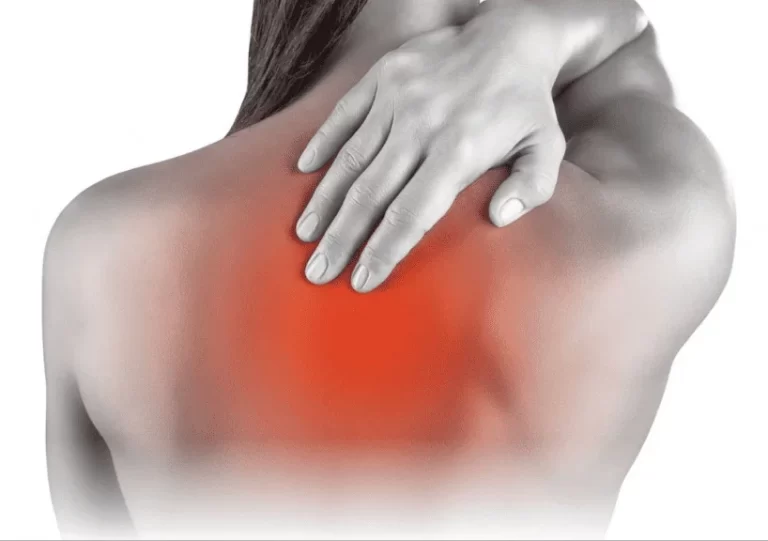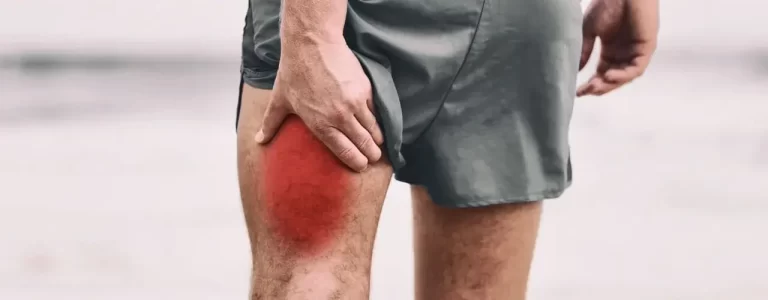How Is a Rotator Cuff Injury Diagnosed?
To Diagnosed Rotator cuff injury, Your Doctor or Physical therapist may use various functional tests during a physical exam to diagnose your injury.
Few of these tests directly shows a rotator cuff tear and other test help to rule out similar injuries like nerve impingement or labrum tear.
To verify, a doctor may also prescribe you X-Ray or MRI (Magnetic resonance imaging) to diagnose a rotator cuff injury.
Table of Contents
What is a Rotator cuff?
A rotator cuff is a group of 4 muscles that helps to stabilize your shoulder joint. Rotator muscles are also called the SITS muscles, such as:
- supraspinatus
- infraspinatus
- teres minor
- subscapularis
A rotator cuff injury occurs when you have a tear in the muscle or tendon of one of these muscles. Tear in the rotator cuff are the most common tendon injuries seen around the shoulder area. If you are visited Doctor after an injury, they examine you, They perform various examination test that helps to diagnose the injury.
In this article, we discuss the tests that doctors and physiotherapists mostly perform to diagnose rotator cuff injury. We’ll also various treatment options.
List of Tests that help to Diagnose Rotator Cuff Injury:
- Drop-arm test
- Shoulder Shrug Sign
- Apley scratch test
- Apprehension test
- Yergason test
- Lift Off Test
- Empty can test (Jobe’s test)
- Hornblower’s sign test
- Rotator Cuff Lag Sign
- Bear hug test
- Neer’s sign
- Hawkins’ test
- Spurling’s test
- Sulcus sign
- Speed’s maneuver
- “Clunk” sign
- Imaging tests
Drop-arm test
In this Doctor passively elevates your arm to 90 degrees and sees if they can hold that position without the arm dropping, or shrugging.
What it tests for: – Rotator cuff Injury
The positive result if a patient is unable to hold their arms at 90 degrees because of pain
The test is negative if the patient easily controls the lowering of the arm slowly and without pain occurring.
This test is positive if there is a sudden dropping of the arm or weakness in the hold arm position during the lowering of the arm.
Sensitivity – 73%
Specificity – 77%
Shoulder Shrug Sign
The “shrug sign” is positive if you are unable or have difficulty elevating the arm to 90° abduction without elevating the scapular movement or shoulder girdle. This test helps to diagnose rotator cuff injury.
If the rotator cuff is injured, then the deltoid is the main muscle, working primarily.
This is a sign of a shrug.
Apley scratch test
How it’s performed: These tests help to assess the shoulder range of motion. To assess adduction, the patient is asked to reach across the back of the chest and try to touch the opposite shoulder
What it tests for: Frozen Shoulder or Rotator cuff injuries or limited range of motion related to shoulder
Positive result: Pain or limitation on the injured side as compared to the normal side.
Apprehension test
The apprehension test is mostly used to test the stability of the shoulder joint capsule or to examine shoulder instability in the anterior direction in Shoulder Dislocation related conditions.
How it’s performed: Your arm will be lifted to your side (Shoulder flexion with 90-degree abduction) with your elbow flexed at 90 degrees. A doctor will externally rotate your hand behind you while stabilizing your shoulder.
If this test is performed in a supine position and if positive, then the relocation test is performed by applying down pressure over the shoulder. This helps to stabilize the shoulder. If it provides relief, it indicates the positive test that indicates the diagnosis of shoulder instability.
What it tests for: Instability in the anterior part of the shoulder joint
Positive result: Discomfort or pain in the test position
Yergason test
Yergasons test is used to check the pathology of the biceps tendon.
How it’s performed: Starting position is standing or sitting.
With the patient’s elbow bent at 90 degrees & stabilized against the chest & with the forearm pronated, the examiner resists supination while the patient also externally rotates the arm against resistance.
What it tests for: biceps tendonitis or Instability of your shoulder joint
Positive result: Pain in your biceps tendon
Lift-Off Test (Gerber’s test)
This test is used to examine the weakness of the subscapularis & tightness of the subscapularis muscle.
How it’s performed:
In a standing position, places the dorsum of the hand on the back pocket or against the midlumber spine.
Then asked them to a patient for lifts the hand away from the back.
An inability to do so indicates a lesion of the subscapularis muscle.
During the test, when you see abnormal movement in the scapula, it shows scapular instability.
What it tests for: a lesion of the subscapularis muscle or scapular instability.
Empty can test (Jobe’s test)
How it’s performed: Your arm should be elevated at 90 degrees in the scapular plane, with the elbow extended, full internal rotation, and pronation of the forearm. The examiner should stabilize the shoulder while applying a downward force directed force to the arm, you should try to resist the movement.
What it tests: Rotator cuff injury to supraspinatus or infraspinatus muscles
Positive result: if you feel pain or weakness during the resistance.
Hornblower’s sign test
How it’s performed: In the seating or standing position, The Doctor places the patient’s arm 90 degrees in the scapular plane and bends the elbow to 90 degrees. The patient is then instructed to externally rotate against resistance. The test is positive if the patient is unable to do lateral rotation.
What it tests for: Injury to the teres minor- rotator cuff muscle.
Positive result: if you are unable to externally rotate during the test.
Rotator Cuff Lag Sign
The purpose of this diagnostic test is to examine the presence of a full-thickness rotator cuff injury. the ERLS is helping to
examine the integrity of the supraspinatus and infraspinatus tendons.
In the sitting position, The elbow is passively flexed to 90° and the shoulder abducted to 90° and held 5° off maximal lateral
rotation.
The patient is then asked to maintain the position actively while the therapist releases the wrist support while maintaining
support at the elbow. An inability to maintain the position would indicate rotator cuff injury. The size of the lag is counted in
degrees to the nearest 5°.
Bear hug test:
How it’s performed: You’ll put the palm of your injured arm on your opposite shoulder. An examiner will then try to pull your
hand off your shoulder while you resist by doing an internal rotation.
What it tests for: Injury to subscapularis muscle- rotator cuff muscle
Positive result: Weakness or pain in your shoulder during resistance.
Neer’s sign
How it’s performed: A examiner will stabilize your scapula with one hand, rotate your arm medially, and flex your arm. If the
you feel pain during the test, then the result is counted as a positive.
What it tests for: Shoulder impingement
Positive result: if you feel pain while flexing your arm.
Hawkins’ test
How it’s performed: Your arm will be flexed forward by an examiner and then flexed at the elbow 90 degrees. They will then
internally rotates the arm.
What it tests for: subacromial impingement syndrome.
Positive result: If you feel pain when the arm is internally rotated.
Spurling’s test
How it’s performed: You will look toward your painful shoulder(neck in extension, lateral flexion, and axial compression) and a
the examiner will apply light pressure to the front of your head with their hand.
What it tests for: Cervical nerve root compression
Positive result: When you feel Pain in your shoulder or arm during a test.
Sulcus sign
How it’s performed: A examiner will stabilize your arm at the shoulder while gently applying a downward force applied at the
elbow while the arm is in neutral rotation.
What it tests for: Inferior Shoulder instability
Positive result: A greater than normal amount of gap in your shoulder joint
Speed’s maneuver:
How it’s performed: You’ll flex your arm straight in front of your body (arm in shoulder flexion, external rotation, full elbow extension) with your palm facing upward while an examiner gives resistance.
The test is counted as a positive if you feel pain in the bicipital tendon or the bicipital groove is reproduced.
What it tests for: Bicipital tendonitis or Biceps tendon instability.
Positive result: Pain along your biceps tendon or bicipital groove is reproduced.
“Clunk” sign
How it’s performed: While you lie – in a supine position on a table, an examiner keeps one hand on the posterior aspect of the
shoulder joint while the other hand holds the humerus above the elbow.
The examiner then fully abducts the arm over the head while pushing anteriorly on the humeral head and simultaneously
laterally rotating the arm.
What it tests: Labral disorders
Positive result: A positive test is counted during the test if you feel the presence of a snap, clunk, or grinding sound. It shows a
labral tear.
Imaging tests
An examiner may also suggest you imaging tests to diagnose your rotator’s cuff injury for example an x-ray, ultrasound, or MRI.
X-rays don’t show a rotator cuff injury but help to rule out other causes of shoulder pain, such as bone spurs.
Ultrasounds also help to monitor the muscle and tendons while you move your arm and compared to your normal arm.
Magnetic resonance imaging(MRI) uses radio waves to show the bone, muscles, and connective tissue in your shoulder.
Symptoms of a rotator cuff injury
Symptoms of a rotator cuff muscle injury can vary depending on which muscle is injured and also the severity of the injury. The Tears of Rotator cuff muscles can vary from microtears to complete tears and can be caused by either a sudden injury or overuse
repeated trauma.
The most common symptoms are:
- Shoulder pain when lying on the affected shoulder
- Shoulder pain when lifting your arm or during rotational movement
- Muscle weakness in the injured arm
- cracking or popping sounds in certain movement
How a rotator cuff is treated?
If you are diagnosed with rotator cuff injury, it’s important to avoid activities that increase your pain and give rest.
Most rotator cuff injuries don’t require surgery to heal.
Conservative treatment
The most basic form of treatment is to rest the injury with the use of the RICE Principle. Pain-relieving drugs mainly Nonsteroidal anti-inflammatory drugs(NSAIDs) such as ibuprofen can help reduce pain and swelling. A doctor may prescribe a shoulder sling in to help you rest your shoulder.
Injections
If your pain isn’t responding to rest, a doctor may prescribe a steroid injection, which helps to reduce inflammation and give pain relief.
Physical therapy treatment
Regular physical therapy can help you strengthen your weak Rotator cuff muscles and improve your range of motion. A therapist can prescribe you specific exercises and stretches to help you to improve shoulder function and also prevent re-injury.
Surgery:
Surgery may be needed for a more severe form of rotator cuff tear. Some surgical options are:
- Open repair
- Tendon transfer
- Mini-open repair
- Arthroscopic repair
Conclusion:
Rotator cuff injuries are common injuries caused by damage to the Rotator cuff muscles or tendons that help to stabilize your shoulder joint. Physical examination test help to diagnose the Shoulder injury. Use of the RICE Principle, Pain relieving NSAIDs medicine, and Shoulder Sling helps to recover within a few days. Surgery is also recommended by Doctor if the injury is severe.


